
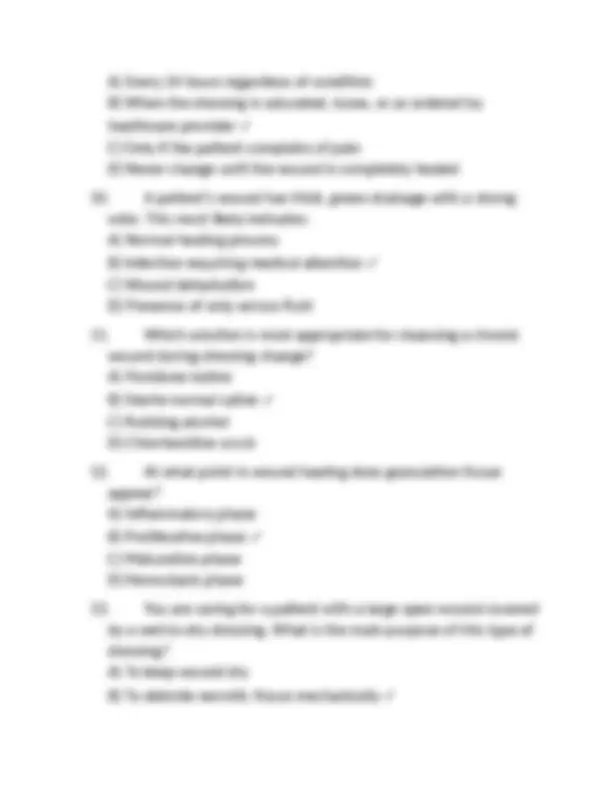
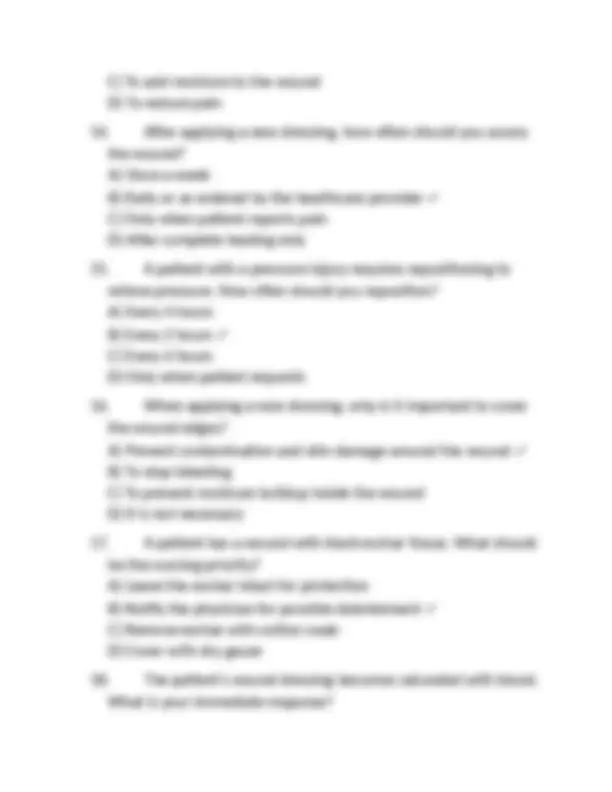
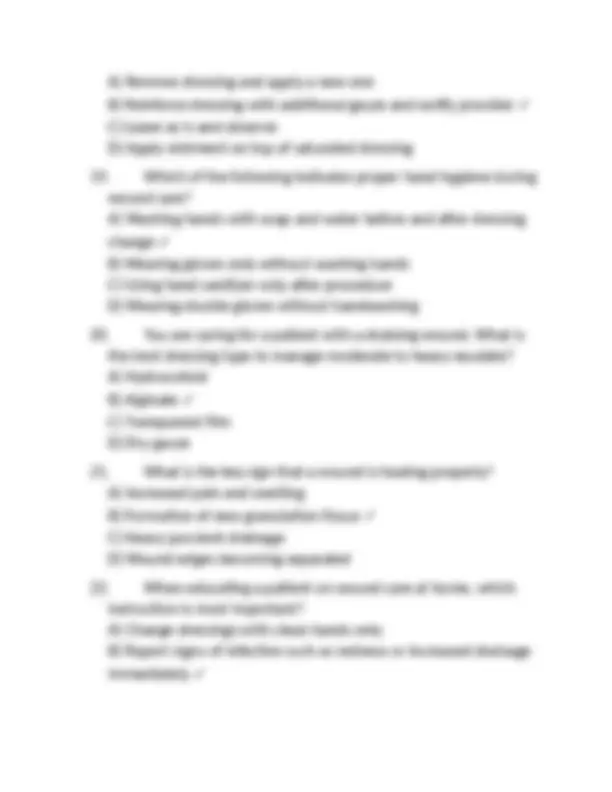
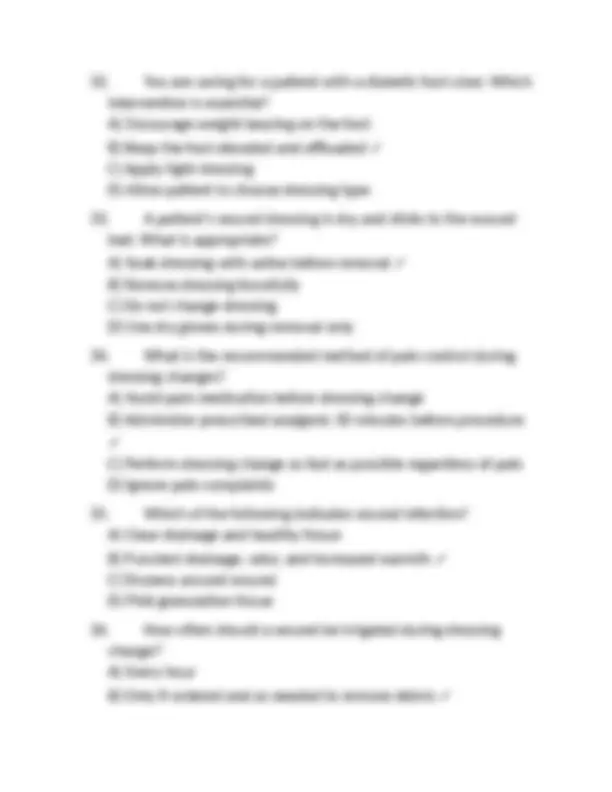
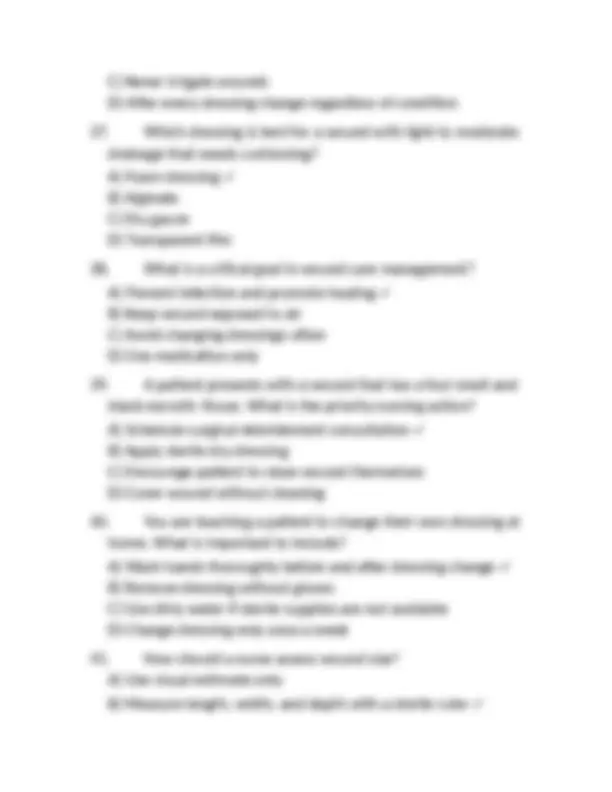
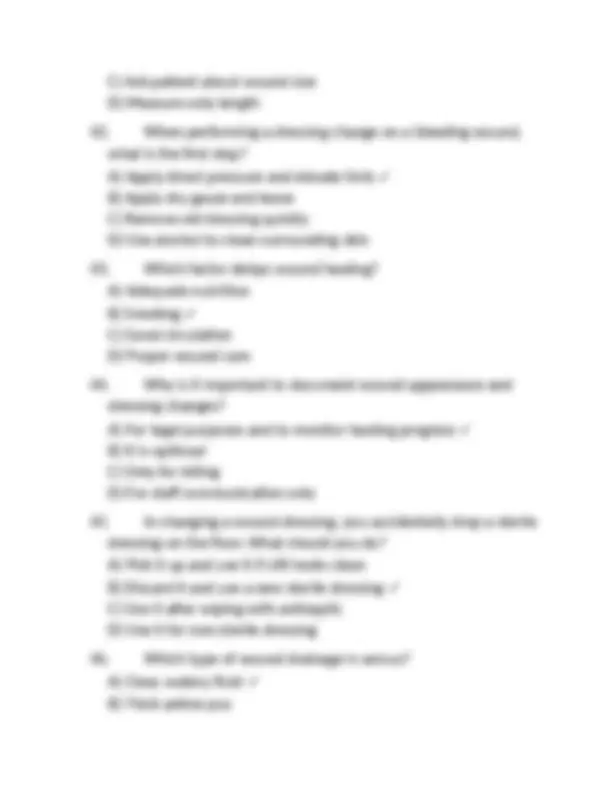


Study with the several resources on Docsity

Earn points by helping other students or get them with a premium plan


Prepare for your exams
Study with the several resources on Docsity

Earn points to download
Earn points by helping other students or get them with a premium plan
Community
Ask the community for help and clear up your study doubts
Discover the best universities in your country according to Docsity users
Free resources
Download our free guides on studying techniques, anxiety management strategies, and thesis advice from Docsity tutors
Clinical Skills in Wound Care and Dressing Change Management Clinical Skills in Wound Care and Dressing Change Management.
Typology: Exams
1 / 11

This page cannot be seen from the preview
Don't miss anything!







Clinical Skills in Wound Care and Dressing Change Management
C) To add moisture to the wound D) To reduce pain
A) Remove dressing and apply a new one B) Reinforce dressing with additional gauze and notify provider ✓ C) Leave as is and observe D) Apply ointment on top of saturated dressing
A) Use adhesive tape tightly B) Use a gauze wrap or netting for gentle securement ✓ C) Use staples D) Do not secure dressing
C) Ask patient about wound size D) Measure only length
C) Bright red blood D) Green foul-smelling fluid